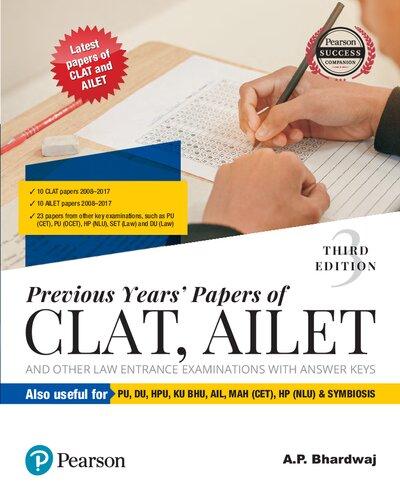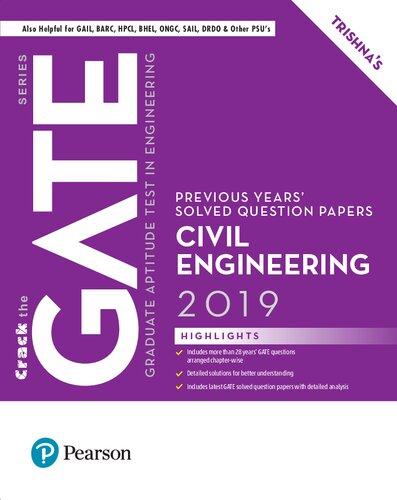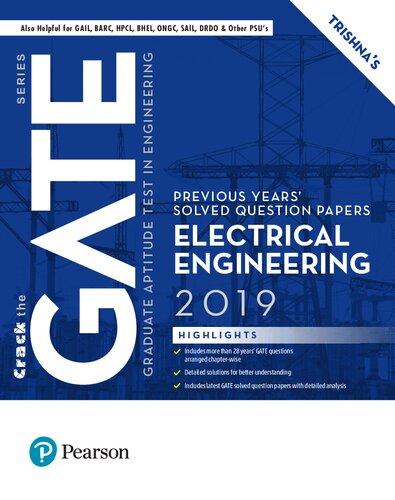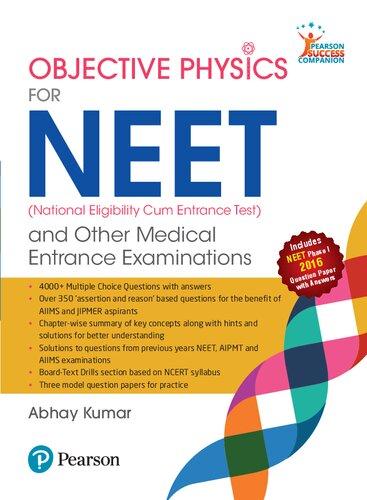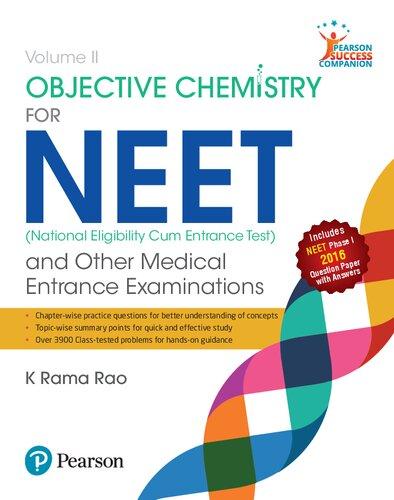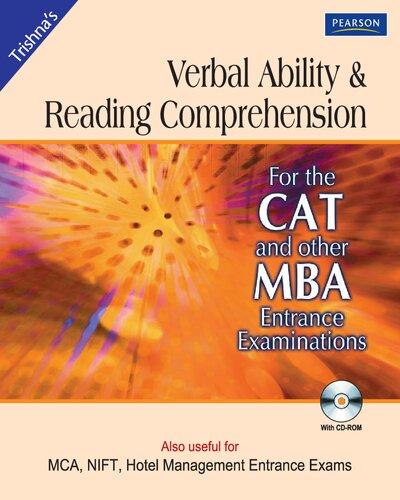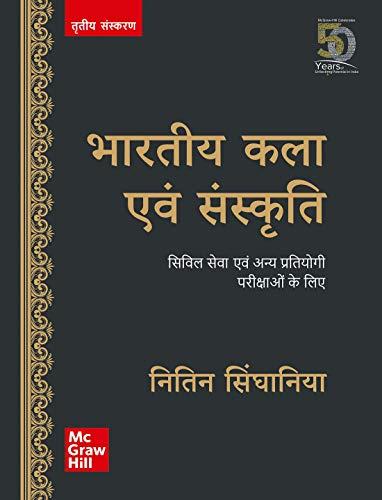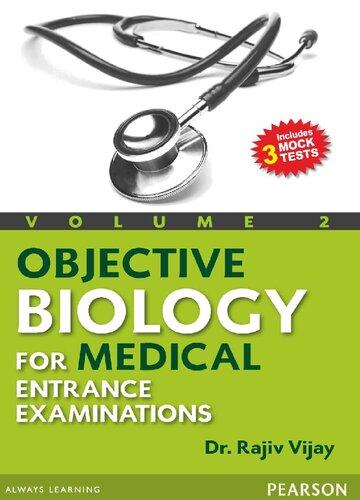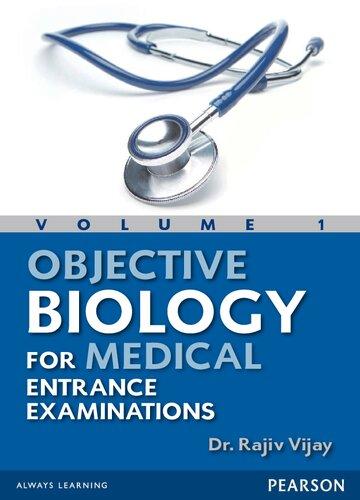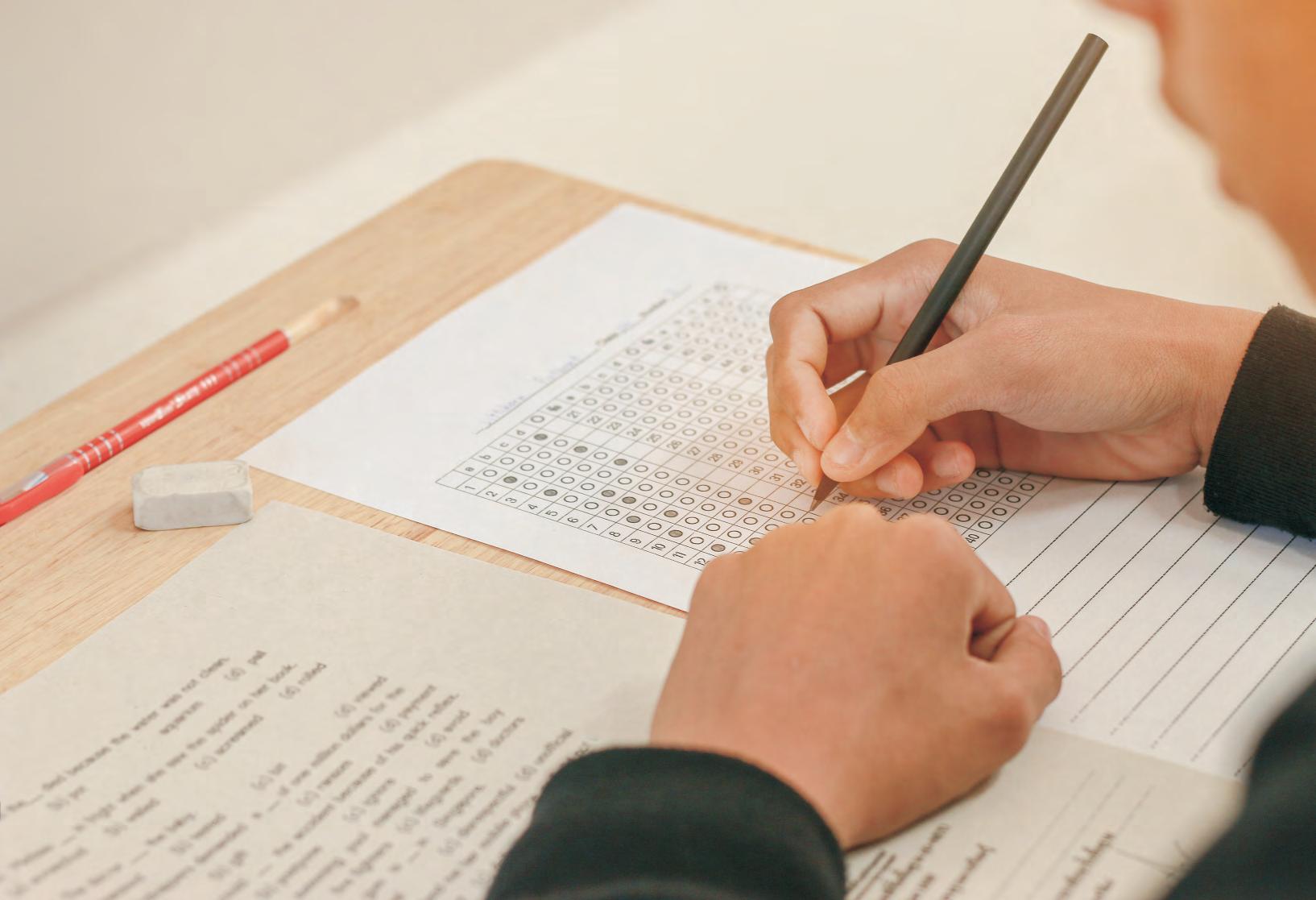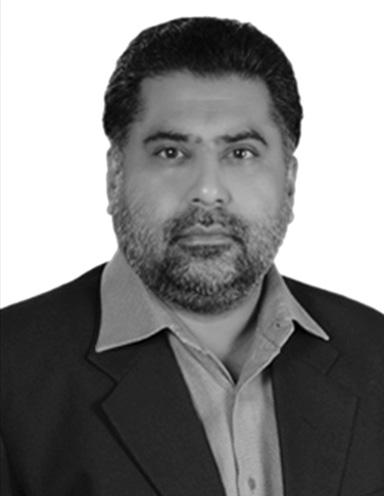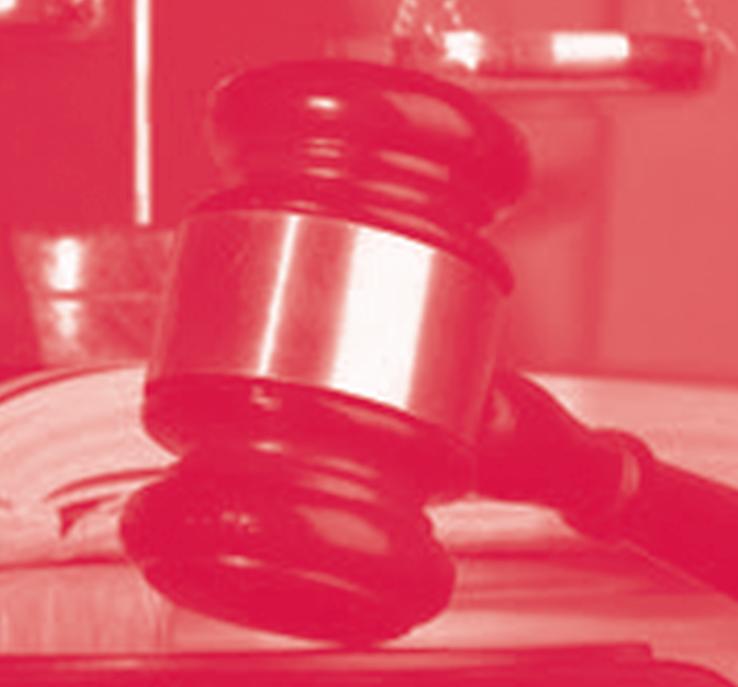Examination Analysis–CLAT and AILET
CLAT AND AILET—AN INDEPTH ANALYSIS
COMMON LAW ADMISSION TEST (CLAT) is conducted every year for admission to the 19 National Law Universities (NLU) of our country. On the other hand, All India Law Entrance Test (AILET) is held for NLU, Delhi. CLAT paper consists of 200 marks where as AILET is made up of 150 Marks. Introduced in 2008, CLAT was started with a humble beginning of 8000 applicants but within a span of 10 years, this number has crossed 50,000 applicants and is still multiplying with every passing year.
The inclination for legal field is soaring high and so is the popularity of CLAT and AILET. With every passing year, not only is the number of applicants increasing, but the difficulty level of examination pattern is also going up at meteoric speed. The students, irrespective of their background, are getting attracted towards the legal field and consequently making CLAT and AILET further more popular and tougher at the same time. Nonetheless, cracking CLAT and AILET is not an easy task as it requires perfect blend of hard work and smart work. Hard work, obviously, has no substitute but, at the same time, smart work is also required to get away from over flooded undesirable materials in the market which may steal away your precious time, money and energy.
To assist you in your decision as to what to study and how, topic/section-wise description has been provided along with tables depicting section-wise bifurcation of 200 marks of CLAT and 150 marks of AILET in the core sections.
CLAT Pattern
Total Questions:
Duration: 120 minutes
AILET Pattern
Total Questions: 150
Total Time: 90 Minutes
Negative Marking: No
LEGAL APTITUDE
Legal aptitude—comprising legal awareness and legal reasoning—is the main component of CLAT and AILET and other major law entrances examinations.
The tables provided are suggestive of the weightage given to legal awareness and legal reasoning under the legal aptitude section that carries 50 marks in CLAT and 35 marks in AILET.
Since the introduction of CLAT in 2008, the trend of questions of legal aptitude has been varying.
1. From 2015 to 2017, a very serious balancing attempt is being made to bring the weightage to both the verticals at par.
2. In 2008, all legal aptitude questions were from legal reasoning.
3. In 2009 and 2010, there was a total reversal of trend and all legal aptitude questions were from legal awareness.
4. 2011 was again like 2008.
5. 2012 showed impartial division.
6. 2013 and 2014 were like 2008 and 2011, respectively.
7. Since 2015, equal weightage is being given to both the verticals.
It may be expected that this pattern may remain preferable in the future. The trends of previous years’ papers clearly indicate that Constitutional Law and Law of Torts are given the highest precedence as compared to other components of Legal Aptitude.
CLAT—Legal Aptitude Section 5 Years’ Examination Analysis – 50 Marks
GENERAL KNOWLEDGE (GK)
General Knowledge is one of the most important and equally tricky section because of its vastness. GK has broadly two components, i.e., static GK and current affairs (CA).
In CLAT, GK’s weightage is of 50 marks making it equally important to that of legal section. These two sections together comprise 100 marks—half of the 200 marks score.On the other hand, AILET has 35 marks of GK.
Static GK includes it history, polity, geography, general science, economy and above all, the unending general awareness. It requires thorough study and preparing of short notes along with practicing lot of multiple choice questions (MCQ).
General Awareness (Books, UNO, Records, First and Last, Highest, Tallest, Smallest, Biggest)
AILET—G.K. and Current Affairs Section 5 Years’ Examination Analysis – 35 Marks
TEST OF ENGLISH
The test of English language has a weightage of 40 marks in CLAT and 35 in AILET. If one happens to make a cursory look on the previous year papers, one can easily make out that vocabulary covers sizeable portion. 50% questions are directly asked on various forms of vocabulary, such as synonyms, antonyms, idioms and phrases, spellings, finding odd word and the closest meaning, therefore, a word bank storage is an inevitable requirement for the legal field. Comprehension consumes 25% share and is designed such that students who have very vast reading habits and consequent vast vocabulary knowledge (with ability to decipher the meanings in proper context and perspective) will be able to comprehend and answer the questions correctly. The remaining 25% focuses on grammar, usage, errors, ordering and reordering of sentences. Nonetheless, one can easily become proficient in these topics with the help of adequate practice.
CLAT—English Section 5 Years’ Examination Analysis – 40 Marks
AILET—English Section 5 Years’ Examination Analysis – 35 Marks
MATHEMATICAL ABILITY
This section comprises 20 questions of 1 mark each in CLAT and 10 questions of 10 marks in AILET. The topics invariably covered are average, simplification, ration/proportion, simple interest/compound interest, (time-workdistance), partnership, area/ volume, probability, surds and indices. For this purpose, refreshing your fundamentals from 9th and 10th standard school books and bit of practice will be sufficient.
CLAT—Mathematics Section 5 Years’ Examination Analysis – 20 Marks
Simplification
Simple Interest/ Compound Interest
Time, Work and Distance
Profit and Loss
Ration and Proportion
Probability
Area of Volume
Probability
Surds and Indices
AILET—Mathematics Section 5 Years’ Examination Analysis – 10 Mark
SI/CI Ratio Proportion
Loss/Profit Partnership Time, Work and Distance
Probability
Area/volume
Surds and Indices
LOGICAL REASONING
CLAT covers 40 marks weightage whereas AILET 35 marks for this subject. The most important topics (where multiple questions are asked) are blood relations, distance, direction, sitting arrangements. In addition to these, the other important topics are series, analogy, classification, Venn diagram, statement assumption and statement arguments.
This section demands lot of regular practice.
Section
CLAT—Logical Reasoning Section 5 Years’ Examination Analysis – 40 Marks
Logical Reasoning Series
Analogy
Venn Diagrams
Blood Relations
Sitting Arrangement
Distance and Directions
Statement and Assumptions
Statement and Argument
Cause and Effect
Logical Deductions
AILET—Logical Reasoning Section 5 Years’ Examination Analysis – 35 Marks
Analogy
Venn Diagrams
Blood Relations
Sitting Arrangement
Distance and Directions
Statement and Assumptions
Statement and Argument
Cause and Effect
Logical Deductions
IMPORTANT TIPS
1. Time management is life management. It is the most productive element of preparation if used wisely and meaningfully. Try to avoid diversions especially social media.
2. Just quantitative studies in any way from anywhere will not suffice, rather specialized, guided, qualitative and organized studies from standard and rich resource materials is required.
3. Make brief notes, these will strengthen your base.
4. Regular revision is a necessary nuisance.
5. Vocabulary building is an inevitable necessity.
6. Continuous practice of MCQs necessary to reinforce the concepts.
7. Learn short cuts for mathematics and reasoning.
8. Periodic & objective evaluation would act on a timely reminder.
9. Maintaining confidence level is the greatest challenge throughout the preparation period.
10. Above all, positive attitude can bring unimaginable results. Avoid negative thoughts and negative people throughout the examination preparation period.
This page is intentionally left blank.
SECTION I: ENGLISH
CLAT 2017
Directions (questions 1–10): Fill in the blank by choosing the most appropriate option.
1. We shall fail ________we are industrious.
(a) whether (b) unless (c) until (d) though
2. She stood _______ Amit, but could not utter a single word for quite some time.
(a) before (b) for (c) about (d) to
3. Kanak is endowed _________ many great qualities.
(a) by (b) with (c) in (d) of
4. The minister flew ___________ the flooded areas in a helicopter.
(a) along (b) over (c) in (d) about
5. You have played a great role, for _______ your help I possible would have landed myself into a problem.
(a) without (b) although (c) despite (d) after
6. The doctor advised him to go _________several medical tests.
(a) about (b) under (c) through (d) into
7. Would anybody __________a mother have risked her life for the baby?
(a) but (b) rather (c) than (d) however
8. The passengers were very happy _________ the friendly and warm treatment.
(a) to (b) from (c) about (d) by
9. If they want to succeed, they ___________ have to work very hard.
(a) should (b) ought (c) will (d) must
10. Sunita decided to set _______some time every day for prayers.
(a) up (b) in (c) aside (d) on
Directions (questions 11–15): Read the given passage carefully and choose the most appropriate option to the questions given below.
The World Trade Organization (WTO) was created in the early 1990s as a component of the Uruguay Round negotiation. However, it could have been negotiated as part of the Tokyo Round of the 1970s, since negotiation was an attempt at a ‘constitutional reform’ of the General Agreement on Tariffs and Trade (GATT). Or it could have been put off to the future, as the US government wanted. What factors led to the creation of the WTO in the early 1990s? One factor was the pattern of multilateral bargaining that developed late in the Uruguay Round. Like all complex international agreements, the WTO was a product of a series of trade-offs between principal actors and groups. For the United States, which did not want a new organization, the disputed settlement part of the WTO package achieved its longstanding goal of a more effective and more legal dispute settlement system. For the Europeans, who by the 1990s had come to view GATT dispute settlement
less in political terms add more as a regime of legal obligations, the WTO package was acceptable as a means to discipline the resort to unilateral measures by the United States. Countries like Canada and other middle and smaller trading partners were attracted by the expansion of a rule-based system and by the symbolic value of a trade organization, both of which inherently support the weak against the strong. The developing countries were attracted due to the provisions banning unilateral measures. Finally, and perhaps most important, many countries at the Uruguay Round came to put a higher priority on the export gains than on the import losses that the negotiation would produce, and they came to associate the WTO and a rule-based system with those gains. This reasoning—replicated in many countries—was contained in U. S. Ambassador Kantor’s defence of the WTO, and it announced to recognition that international trade and its benefits cannot be enjoyed unless trading nations accept the discipline of a negotiated rule-based environment. A second factor in the creation of the WTO was pressure from lawyers and the legal process. The dispute settlement system of the WTO was seen as a victory of legalists but the matter went deeper than that. The GATT, and the WTO, is contract organizations based on rules, and it is inevitable that an organization creating a further rule will in turn be influenced by legal process. Robert Hudee has written of the ‘momentum of legal development’, but what is this precisely? Legal development can be defined as promotion of the technical legal values of consistency, clarity (or certainty) and effectiveness; these are values that those responsible for administering any legal system will seek to maximize. As it played out in the WTO, consistency meant integrating under one roof the whole lot of separate agreements signed under GATT auspices; clarity meant removing ambiguities about the powers of contracting parties to make certain decisions or to undertake waivers; and effectiveness meant eliminating exceptions arising out of grandfather-rights and resolving defects in dispute settlement procedures and institutional provisions. Concern for these values is inherent in any rule-based system of co-operation, since without these value rules would be meaningless in the first place, therefore, create their own incentive for fulfilment. The moment of legal development has
occurred in other institutions besides the GATT, most notably in the European Union (EU). Over the past two decades the European Court of Justice (ECJ) has consistently rendered decisions that have expanded incrementally the EU’s internal market, in which the doctrine of ‘mutual recognition’ handed down in Cassis de Dijon case in 1979 was a key turning point. The court is now widely recognized as a major player in European integration, even though arguably such a strong role was not originally envisaged in the Treaty of Rome, which initiated the current European Union. One means the Court used to expand integration was the ‘teleological method of interpretation’, whereby the actions of member states were evaluated against ‘the accomplishment of the most elementary goals set forth in the Preamble to the (Rome) treaty. The teleological method represents an effort to keep current policies consistent with slated goals, and it is analogous to the effort in GATT to keep contracting party trade practices consistent with slated rules. In both cases legal concerns and procedures are an independent force for further co-operation.
In the large part the WTO was an exercise in consolidation. In the context of a trade negotiation that created a near-revolutionary expansion of international trade rules, the formation of the WTO was a deeply conservative act needed to ensure that the benefits of the new rules would not be lost. The WTO was all about institutional structure and dispute settlement: these are the concerns of conservatives and not revolutionaries that is why lawyers and legalists took the lead on these issues. The WTO codified the GATT institutional practice that had developed by custom over three decades, and it incorporated a new dispute settlement system that was necessary to keep both old and new rules from becoming a sham. Both the international structure and the dispute settlement system were necessary to preserve and enhance the integrity of the multilateral trade regime that had been built incrementally from the 1940s to the 1990s.
11. In the statement ‘... it amounted to a recognition that international trade and its benefits cannot be enjoyed unless trading nations accept the discipline of a negotiated rule-based environment’, it refers to
(a) The export gains many countries came to associate with a rule-based system.
(b) The higher priority on export gains placed by many countries at the Uruguay Round.
(c) The provision of a rule-based system by the WTO.
(d) Ambassador Kantor’s defence of the WTO.
12. What would be the closest reason why WTO was not formed in 1970s?
(a) The US government did not like it.
(b) Important players did not find it in their best interest to do so.
(c) Lawyers did not work for the dispute settlement system.
(d) The Tokyo Round negotiations was an attempt at constitutional reform.
13. In the method of interpretation of the European Court of Justice:
(a) Actions against member states needed to be evaluated against the said community goals.
(b) Enunciation of the most elementary community goals needed to be emphasized.
(c) Current policies need to be consistent with stated goals.
(d) Contracting party trade practices need to be consistent with stated rules.
14. According to the passage, WTO promoted the technical legal values partly through.
(a) Integrating under one roof the agreements signed under GATT.
(b) Rules that create their own incentive for fulfilment.
(c) Ambiguities about the powers of contracting parties to make certain decisions.
(d) Grandfather-rights exceptions and defects in dispute settlement procedures.
15. The most likely reason for the acceptance of the WTO package by nations was that:
(a) It has the means to prevent the US from taking unilateral measures.
(b) Its rule-based system leads to export gains.
(c) It settles disputes more legally and more effectively.
(d) They recognized the need for a rule-based environment to protect the benefits of increased trade.
Directions (questions 16–20): In each of the following sentences, some part of the sentence or the entire sentence is underlined. Beneath each sentence, you will find four ways of phrasing the underlined part. Choose the most appropriate option given in each of the sentences given below that is the best version than the underlined part of the sentence.
16. Two valence states of uranium, one with a deficit of four electrons and the other one with a deficit of six occurs in nature and contributes to the diversity of uranium’s behaviour.
(a) The other one a deficit of six, occur in Nature and contribute.
(b) The other with a deficit of six, occurs in Nature and contributes.
(c) The other with a deficit of six, occur in Nature and contribute.
(d) One with six occurs in Nature and contributes.
17. Initiative and referendum, is a procedure that allows voters to propose and pass laws as well as to repeal them.
(a) Allows voters to propose, pass and to repeal laws.
(b) Will allow laws on be proposed, passed, as well as repealed by voters.
(c) Allows voters to propose to pass, and repeal laws.
(d) Will allow voter to propose, pass, as well as to repeal laws.
18. Plausible though it sounds, the weakness of the hypothesis is that it does not incorporate all relevant facts.
(a) The weakness of the hypothesis which sounds plausible.
(b) Though the hypothesis sounds plausible, its weakness.
(c) Even though it sounds plausible, the weakness of the hypothesis.
(d) Though plausible, the hypothesis’ weakness.
19. Many of them chiselled from solid rock centuries ago the mountainous regions are dotted with hundreds of monasteries:
(a) The mountainous regions are dotted with hundreds of monasteries, many of which are chiselled from solid rock centuries ago.
(b) The mountainous regions are dotted with hundreds of monasteries, many of them chiselled from solid rock centuries ago.
(c) Hundreds of monasteries, many of them chiselled from solid rock centuries ago, are dotting the mountainous regions.
(d) Chiselled from solid rock centuries ago, the mountainous regions are dotted with many hundreds of monasteries.
20. During her lecture, the speaker tried to clarify directional terms, for not everyone in attendance was knowledgeable that winds are designed by the direction from which they come.
(a) With everyone in attendance not knowing.
(b) For everyone in attendance did not know.
(c) With everyone attending not knowledgeable.
(d) For not everyone attending knew.
Directions (questions 21–24): Choose the correct spellings in questions given below.
21. Choose the correct spellings in options given below.
(a) Accommedation (b) Accommodation (c) Accomadation (d) Accomedation
22. Choose the correct spellings in options given below.
(a) Ghallows (b) Gallows (c) Ghellows (d) Gellows
23. Choose the correct spellings in options given below.
(a) Renumeration (b) Remuneration (c) Remunaration (d) Renumaration
24. Choose the correct spellings in options given below.
(a) Blashphemy (b) Bleshphemy (c) Blasphamy (d) Blasphemy
Directions (questions 25–28): Choose the correct spellings in questions given below.
25. Choose the correct spellings in options given below.
(a) Hyphothecation (b) Hypathecation (c) Hypothecation (d) Hypthacation
26. Choose the correct spellings in options given below.
(a) Gratuitous (b) Gratitious (c) Gratetious (d) Gratuitus
27. Choose the correct spellings in options given below.
(a) Interrogation (b) Interogetion (c) Interogation (d) Interagation
28. Choose the correct spellings in options given below.
(a) Annulement (b) Anulment (c) Annulment (d) Annulmant
Directions (questions 29–30): Choose the correct spellings in questions given below.
29. Choose the correct spellings in options given below.
(a) Abhayence (b) Abheyance (c) Abeyance (d) Abeyence
30. Choose the correct spellings in options given below.
(a) Moratarium (b) Moretorium (c) Maratorium (d) Moratorium
Directions (questions 31–40): In each of the following sentences four words or phrases are underlined. If there is any mistake with regard to grammar or usage, it is in the underlined part only. Identify the incorrect part.
31. Evidently our product is the most unique in the market.
(a) C (b) D
(c) B (d) A
32. The most difficult job is to bend and then lifting the weight.
(a) D (b) B (c) A (d) C
33. The hope to go through the book today I have almost read half of it.
(a) A (b) B (c) D (d) C
34. Out boss always asks us to pay full attention to the work at hand.
(a) B (b) A (c) D (d) C
35. On listening to the confession of love the she blushed until she was purple.
(a) A (b) C
(c) D (d) B
36. After being finished she last chapter of the book return it to me.
(a) C (b) A
(c) D (d) B
37. Since I have forgotten all equations I will have to start from the scratch.
(a) B (b) A
(c) C (d) D
38. He gave me a ticket so that I may visit the book fair.
(a) C (b) A
(c) B (d) D
39. Five gallons of petrol are not enough to cover the distance.
(a) A (b) B
(c) D (d) C
40. The officer asked that the report be submitted immediately.
(a) D (b) C
(c) A (d) B
SECTION II: GENERAL KNOWLEDGE
Directions (questions 41–90): Choose the most appropriate option.
41. Juno is the name of a (a) Hydrogen fuelled submarine
(b) Hydrogen fuelled space craft
(c) Solar powered space craft (d) Atomic powered submarine
42. Who has been selected for 2016 BC Roy Award?
(a) Dr P. Raghu Ram (b) Dr J. Rajendra
(c) Dr N. Bhaskaran (d) Dr Jagat Ram
43. The first country to have announced euthanasia of a child is
(a) Belgium (b) Denmark (c) Finland (d) Norway
44. The Japanese Prime Minister who offered ‘sincere and everlasting condolences’ to the people of the United States for killing more than 2400 soldiers in the attack on Pearl harbour was (a) Kakuei Tanaka (b) Shinzo Abe (c) Juniciro Koizumi (d) Hayato Ikeda
45. In terms of steel production in the world during 2015–2016, India stood at (a) Fourth (b) Second (c) Fifth (d) Third
46. According to the Survey Report released by Transparency International during March 2017 on India, the most corrupt are (a) Government officials (b) Business executives (c) Local Councillors
(d) Police
47. Among the following who was crowned as ‘Miss Supernational’ during 2016?
(a) Srinidhi Shetty (b) Shilpa Shetty (c) Alia Butt (d) Aishwarya Rai
48. Japan is threatening to drag India to WTO on issues relating to the export of its (a) Electronic goods (b) Tea
(c) Small ships (d) Steel
49. COIN, a software programme developed by J. P. Morgan supports (a) Robotic surgery
(b) Financial accounting
(c) Bit coin
(d) Interpreting commercial documents
50. Which of the following country enacted a law during August 2016 providing for the right to register the marriages of Hindus?
(a) Saudi Arabia (b) Iran (c) Afghanistan (d) Pakistan
51. The first elected civilian President in Myanmar is (a) Aung San (b) Khin Ayi (c) Htin Kyaw (d) Aung San Suu Kyi
52. Among the following professors of Indian origin who has received Knighthood for the work as a co-inventor of next generation DNA Sequencing called Solexa Sequencing?
(a) P. C. Mahalanobis (b) Shankar Balasubramanian (c) Mehnad Saha
(d) Satyendra Nath Bose
53. Which court has stayed the execution of death sentence of Kulbhushan Jadhav in May 2017?
(a) International Criminal Court (b) International Court of Justice (c) Supreme Court of India (d) Supreme Court of Pakistan
54. The world’s longest rail tunnel is about (a) 32 km (b) 57 km (c) 23 km (d) 47 km
55. The Hubble telescope of NASA is located in (a) Iceland (b) Space (c) Canada (d) NASA headquarters
56. The first Commercial Court and Commercial Disputes Resolution Centre was inaugurated at (a) Ahmedabad, Gujarat (b) Raipur, Chhattisgarh (c) Mumbai, Maharashtra (d) Visakhapatnam, Andhra Pradesh
57. As on 31st January 2016, the highest number of law colleges were present in (a) Madhya Pradesh (b) Andhra Pradesh (c) Uttar Pradesh (d) Maharashtra
58. The bowler who has claimed the fastest 250 wickets in Cricket test matches is (a) Ravichandran Ashwin (b) Dennis Lillee (c) Rangana Herath (d) Anil Kumble
59. The top destination for domestic tourists in India for the past three consecutive years has been (a) Tamil Nadu (b) Orissa (c) Rajasthan (d) Kerala
60. Name the President elect of France who is likely to take the oath on 14 May 2017. (a) Francois Fill on (b) Emmanuel Macron (c) Francois Holland (d) Marine Le Pen
61. With the development of Terahertz (THz) transmitter, it is expected to be faster than 5G mobile networks by
(a) Two times (b) Ten times (c) Four times (d) Five times
62. India’s third largest trading partner during 2016 is (a) Dubai (b) Saudi Arabia (c) Kuwait (d) UAE
63. The first country in the world to have begun shutting down the entire Frequency Modulation (FM) radio network to be replaced by Digital Audio Broadcasting is (a) Norway
(b) Switzerland
(c) United States of America
(d) China
64. The Happiness Index Department or a Wing has been established in the states of (a) Madhya Pradesh and Tamil Nadu
(b) Andhra Pradesh and Madhya Pradesh
(c) Andhra Pradesh and Sikkim
(d) Madhya Pradesh and Goa
65. Volvo has launched the world’s largest bus that can carry up to (a) 320 passengers (b) 260 passengers (c) 300 passengers (d) 150 passengers
66. Donald Trump is _____________ President of the United States.
(a) 43rd (b) 44th
(c) 46th (d) 45th
67. The 2016 Nobel Peace Prize was won by the President of
(a) United States of America
(b) Columbia
(c) Sri Lanka
(d) South Africa
68. The World Bank had cut India’s GDP growth for 2016–2017 to (a) 7% (b) 8.6%
(c) 8% (d) 7.6%
69. Solar Impulse–2 is
(a) Solar powered ship
(b) Solar powered airplane that completed the first around the world
(c) Hybrid airplane
(d) Impact of climate change for overall increase of 2º C a year
70. The Union Cabinet has recently approved the setting up of a Permanent Tribunal for resolving (a) Complaints from three services
(b) Inter-state water disputes
(c) Inter-state boundary disputes
(d) Election disputes
71. Which country 3D–Printed a home of 37 square metres?
(a) Spain (b) South Korea
(c) Russia (d) Taiwan
72. ‘World’s longest-all women Non-stop flight’ from New Delhi to San Francisco covering 14,500 km was operated by
(a) Air India (b) American Airlines
(c) Jet Airways (d) United Airlines
73. Which country offered asylum seekers 1200 Euros to leave by withdrawing their application for protection?
(a) Italy (b) Germany
(c) Denmark (d) France
74. During 2017, which SAARC country has notified the Right to Information Act?
(a) Nepal (b) Sri Lanka
(c) Afghanistan (d) Bhutan
75. Highest number of open prisons in India as on 2015 are in
(a) Kerala (b) Maharashtra
(c) Tamil Nadu (d) Rajasthan
76. India’s voting rights at the International Monetary Fund increased from 2.3 % to (a) 2.5% (b) 2.6%
(c) 2.8% (d) 2.4%
77. Which of the following individuals was called a ‘deceptive actor’ by China’s foreign ministry during March 2017?
(a) Dalai Lama (b) Donald Trump
(c) Narendra Modi (d) Sirisena
78. ‘Scorpion kick’ is a phrase used in (a) Kalari Fight (b) Kung Fu
(c) Kick Boxing (d) Kabaddi
79. Immediately before Antonio Guterres was appointed the UN Secretary General in October 2016, he was
(a) United Nations High Commissioner for Refugees
(b) Commissioner General of UNRWA
(c) The Prime Minister of Portuguese
(d) United Nations High Commissioner for Human Rights
80. How many billionaires India has lost since demonetization on 8 November 2016?
(a) Eleven (b) Eight
(c) Two (d) Eighteen
81. The world’s first artificial intelligence lawyer, a robot, is named as
(a) Boss (b) Watson
(c) Ross (d) None of the above
82. Till the end of 2016, the total number of UNESCO’s World Heritage Sites in India is
(a) 18 (b) 21
(c) 42 (d) 35
83. India emerged as ___________ largest holder of the US Government Securities at the end of 2016.
(a) 12th (b) 28th
(c) 15th (d) 24th
84. Prithvi Defence Vehicle is
(a) The name of a newly developed tank.
(b) The name of a single seated aircraft developed by HAL.
(c) The name of an amphibious Naval vessel.
(d) The name of India’s Nuclear Interceptor Missile.
85. Which shoe company in the United States of America has won an IPR dispute against China recently for using their logo?
(a) Adidas (b) Reebok
(c) Nike (d) New Balance
86. Among the following, who has won maximum number of titles?
(a) Gopichand (b) P. V. Sindhu
(c) Saina Nehwal (d) Srikant
87. NASA rediscovered India’s lunar spacecraft that was lost in the space during the past eight years known as:
(a) Mangalayaan – I (b) Chandrayan – II
(c) Chandrayan – I (d) Mangalayaan – II
88. Who called the immigration the ‘Trojan horse of Terrorism’?
(a) Theresa May, Prime Minister of U.K
(b) Angela Merkel, Chancellor of Germany
(c) Donald Trump, President of the U.S
(d) Viktor Orban, Prime Minister of Hungary
89. The first statue of a woman in Parliament Square in England is that of
(a) Queen Elizabeth – II
(b) Margaret Thatcher
(c) Millicent Fawcett
(d) Mother Theresa
90. Among the following MLAs who was disqualified by the Governor during January 2017 under Article 192 of the Constitution for undertaking government contracts?
(a) P. C. George of Kerala
(b) Jayalalithaa of Tamil Nadu
(c) Srinivas Prasad of Karnataka
(d) Uma Shankar Singh of Bihar
SECTION III: MATHEMATICS
Directions (questions 91–110): Choose the most appropriate option.
91. Keerthi’s father gave him some money to buy books. He spent half of the money equally to buy books and entertaining his friends. Whatever amount left with him, he deposited half in his savings account and gave ` 5 to a poor person as charity. Finally, Keerthi was left with ` 20 which he returned to his father. What amount did his father give him initially?
(a) ` 120 (b) ` 100
(c) ` 200 (d) ` 160
92. Praveen has ` 4662 in the form of 2, 5 and 10 rupee notes. If these notes are in the ratio of 3 : 5 : 8, the number of five rupees notes with him is
(a) 250 (b) 336
(c) 210 (d) 84
93. A train ‘X’ leaves station ‘A’ at 3 p.m. and reaches station ‘B’ at 4.30 p.m., while another train ‘Y’ leaves station ‘B’ at 3.00 p.m. and reaches station ‘A’ at 4.00 p.m. These two trains cross each other at
(a) 3.30 p.m. (b) 3.20 p.m.
(c) 3.40 p.m. (d) 3.36 p.m.
94. The difference between simple interest and compound interest at the same rate for rupees 5000 for two years is rupees 98. The rate of interest is
(a) 10% (b) 14%
(c) 12% (d) 10 ½%
95. Gold and copper are as heavy as water by 19 and 9 times respectively. The ratio in which these two metals be mixed so that the mixture is 17 times as heavy as water is
(a) 2 : 3 (b) 3 : 2
(c) 4 : 1 (d) 3 : 4
96. There are two urns. One contains two white balls and four red balls; the other contains three white and nine red balls. All balls are of the same shape and size. From each urn, one ball is drawn. What is the probability of getting both the balls of the same colour?
(a) 1/24 (b) 7/12 (c) 1/12 (d) 1/2
97. Two men and seven boys can do a work in 14 days. Three men and eight boys can do the same work in 11 days. Further eight men and six boys can do three times the amount of this work in (a) 21 days (b) 18 days (c) 24 days (d) 30 days
98. A piece of cloth costs rupees 75. If the piece is four meters longer and each meter costs rupees 5 less, the cost remains unchanged. What is the length of the piece?
(a) 8 meters (b) 10 meters (c) 12 meters (d) 6 meters
99. A man rows to a place 45 k.ms distant and back in 12 hours. He realizes that he can row 5 km downstream in the same time as 3 km against the stream. The velocity of the stream is:
(a) 2 km/hr (b) 1.5 km/hr (c) 1 km/hr (d) 4 km/hr
100. In an office, 1/3 of the workers are Men, ½ of the men are married and 1/3 of the married men have children. If ¾ of the women are married and 2/3 of the 2/3 of the married women have children, then the part of workers without children are:
(a) 17/36 (b) 4/9 (c) 5/18 (d) 11/18
101. Taps ‘A’ and ‘B’ can fill a tank in 37 ½ minutes and 45 minutes respectively. Both taps are opened and after some time tap ‘B’ is turned off. The tank
is filled completely in exactly 30 minutes, if tap ‘B’ is turned off after
(a) 9 minutes (b) 10 minutes
(c) 15 minutes (d) 12 minutes
102. A boat travels upstream from A to B and back from B to A in 5 hours. The speed of the boat in still water is 8 km/hour and the speed of the current is 4 km/hour. Then, the distance from A to B is
(a) 9 km (b) 10 km
(c) 12 km (d) 15 km
103. Age of father 10 years ago was three times the age of his son. After 10 years, father’s age is twice that of his son. The ratio of their present ages is (a) 7 : 3 (b) 9 : 5 (c) 7 : 4 (d) 11: 7
104. A clock was set correct at 12 O’ clock. It loses 10 minutes per hour. What will be the angle between the hour and minute hands of the clock after one hour?
(a) 75º (b) 85º (c) 105º (d) 90º
105. A trader sells rice at a profit of 20% and uses weights which are 10% less than the correct weight. The total gain earned by him is
(a) 33 1 3 % (b) 22 2 9 %
(c) 30% (d) 35%
106. The average weight of three men ‘X’, ‘Y’ and ‘Z’ is 75 kg. Another man ‘A’ joins the group and the average weight now becomes 80 kg. If another person ‘B’ whose weight is 5 kg more than ‘A’ replaces ‘X’, then the average weight of ‘Y’, ‘Z’, ‘A’ and ‘B’ will be 85 kg. What is the weight of ‘X’?
(a) 80 kg (b) 84 kg
(c) 82 kg (d) 78 kg
107. ‘A’ and ‘B’ complete a work in 12 days, ‘B’ and ‘C’ in 8 days and ‘C’ and ‘A’ in 16 days. ‘A’ left after working for 3 days. In how many days more will ‘B’ and ‘C’ finish the remaining work?
(a) 3 5 6 (b) 3 3 4 (c) 7 3 4 (d) 4 3 4
108. A vessel contains a mixture of milk and water in the ratio of 5 : 3, respectively. How much of the mixture must be siphoned off and replaced with water, so that the mixture may be half milk and half water?
(a) 1/3 (b) 1/4
(c) 1/7 (d) 1/5
109. A can do a piece of work in 8 days and B alone can do the same work in 10 days. A and B agreed to do the work together for ` 720. With the help of C, they finished the work in 4 days. How much C is to be paid?
(a) ` 80 (b) ` 82
(c) ` 72 (d) ` 70
110. The Banker’s discount on a sum of money for 18 months is ` 600 and the true discount on the same sum for 3 years is ` 750/-. The rate percentage is
(a) 10% (b) 20%
(c) 12% (d) 15%
SECTION IV: LEGAL APTITUDE
Question numbers 1–35 consists of legal proposition(s)/ principle(s) (hereinafter referred to as ‘principle’) and facts. Such principles may or may not be true in the real and legal sense, yet you have to conclusively assume them to be true for the purposes of this section. In other words, in wiring these questions, you must not rely on any principle except the principles those are given herein below for every question. Further, you must not assume any facts other than those stated in the question. The objective of this section is to test your interest towards study of law, research aptitude and problem solving ability, even if the ‘most reasonable conclusion’ arrived at may be absurd or unacceptable for any other reason. It is not the objective of this section to test your knowledge of law. Therefore, to were a question, principle is to be applied to the given facts and to choose the most appropriate option.
111. Principle: The concept of natural justice is against bias and for the right to a fair hearing. While the term natural justice is often retained as a general concept and it has largely been replaced and extended by the general ‘duty to act fairly’.
Fact: ‘X’, a male employee of a company was dismissed by the employer just on the basis of a complaint by ‘Y’, a female employee of the company that ‘X’ was trying to be too friendly with her and often requested her to accompany him to the canteen.
Is the dismissal of ‘X’ valid?
(a) No, because in the modern times this type of behaviour is common.
(b) No, because the employer did not give a chance to ‘X’ to explain his side, there by violated the principles of natural justice.
(c) Yes, moral law is antique and therefore, not applicable in modern times, therefore the termination is valid and no violations of the principles of natural justice occurred.
(d) Yes, because men are not supposed to behave improperly with women and hence there is no violation of any principles of law.
112. Principle: Ownership in property consists of right to possess, right to use, right to alienate and right to exclude others. Sale is complete when property gets transferred from the seller to the buyer on sale.
Facts: ‘A’ sold his car to ‘B’. After this, ‘B’ requested ‘A’ to keep the car in his care on behalf ‘B’ for one month. ‘A’ agreed.
(a) Sale of car is not complete.
(b) Sale will be completed when ‘B’ will take the delivery of the car.
(c) Sale of car is complete.
(d) Sale will be automatically completed after the expiry of one month.
113. Principle: Every agreement, by which any party is restricted absolutely from enforcing his right in respect of any contract, by the usual legal proceedings in the ordinary Tribunals, is void to that extent. The law also provides that nobody can confer jurisdiction to a civil court by an agreement between parties.
Facts: A and B entered into a valid contract for rendering certain service. A clause in the contract was that in case of any dispute arose out of the contract; it shall be referred to for Arbitration only. Is the contract valid?
(a) Arbitration is also valid dispute settlement machinery recognized by law and hence the entire contract is valid.
(b) The parties were trying to confer jurisdiction to some authority to decide a dispute and hence the clause would be invalid.
(c) Arbitrator cannot be termed as an ordinary Tribunal. Hence, the agreement is void and would be unenforceable.
(d) The contract is valid but the clause regarding Arbitration is void.
114. Principle: It is a case of fraud where a party to a contract knows or believes a fact to be true, but conceals it actively from the other party with a view to induce that person to enter into the contract.
Facts: While taking a life insurance policy, in reply to questions by the insurance company during the inquiry into his proposal, Zameer deliberately concealed the fact of his medical treatment for a serious ailment, which he had undergone only a few weeks ago.
(a) The act of Zameer did not amount to fraud, as disclosing the fact would have resulted in exposure of his privacy.
(b) The act of Zameer amounted to innocent misrepresentation.
(c) The act of Zameer did not amount to any misrepresentation.
(d) The concealment of fact by Zameer amounted to fraud.
115. Principle: Contract is a written or spoken agreement, with specific terms between two or more persons or entities in which there is a promise to do something in return for a valuable benefit known as consideration. Such an agreement is intended to be enforceable by law. A unilateral contract is one in which there is a promise to pay or give other consideration in return for actual performance.
Facts: A Toilet Soap Manufacturing Company in India in order to promote the sale of their product published an advertisement in all the Newspapers on 1 January 2017 that the company has kept a model ignition key of an Audi A3 car.
The advertisement also stated that whoever gets the said key before 31 December 2017 from a soap bar will be gifted with the Audi A3 car. Mr Martin, a foreigner who came to India as a Tourist who was staying in a hotel found a key similar to same car ignition key. Mr Martin brought this matter to the notice of the Hotel Manager. The Manager informed Mr Martin about the Company’s advertisement on 1 January 2017. Mr Martin wants to claim the car. Will he succeed?
(a) No. The Soap Company has not entered into a contract with Mr Martin as he was not in India on 1 January 2017 when the advertisement was published.
(b) No. Actual intention of the Company was to promote the sale of the soap.
(c) The Hotel Manager who could legally claim the car as he was the one actually purchased the soap for the use in the Hotel.
(d) Mr Martin obtained the key before the stipulated date from the soap bar. So he is covered by the offer of the soap company and can claim the car.
116. Principle: When a person who has made a promise to another person to do something does not fulfil his promise, the other person becomes entitled to receive, from the person who did not fulfil his promise, compensation in the form of money.
Facts: ‘X’ made a promise to ‘Y’ to repair his car engine. ‘Y’ made the payment for repair. After the repair, ‘Y’ went for a drive in the same car. While driving the car, ‘Y’ met with an accident due to bursting of a tyre.
(a) ‘Y’ will be entitled to receive compensation from ‘X’ in the form of money.
(b) ‘X’ will not be entitled to receive compensation.
(c) ‘X’ will be entitled to receive compensation from ‘Y’ in the form of money.
(d) ‘Y’ will not be entitled to receive compensation from ‘X’.
117. Principle: In criminal law, misappropriation is the intentional, illegal use of the property or funds of another person for one’s own use or other unauthorized purpose, particularly by a public
